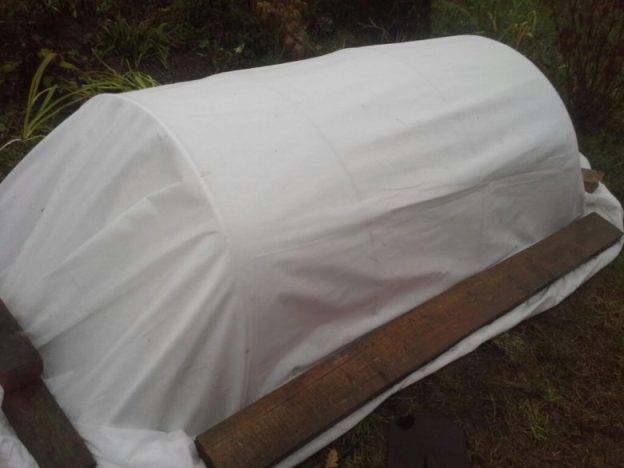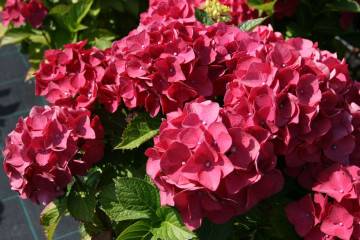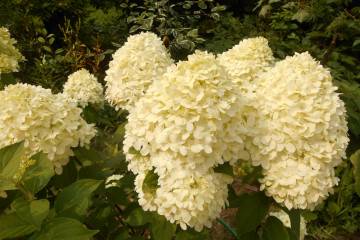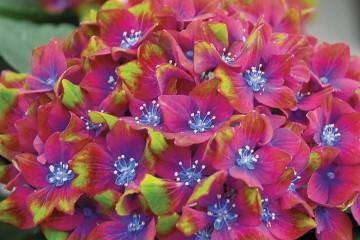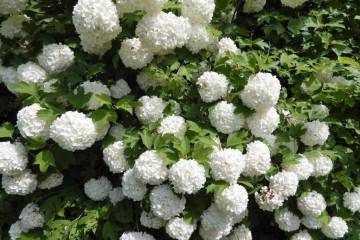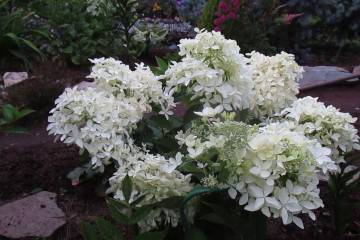Hydrangea Nikko Blue - description, planting and care
Content:
Gardeners love the large-leaved Nikko Blue hydrangea, which changes the color of the petals from white to pink, bright blue or pale blue. To grow these bright flowers in summer cottages, in parks and gardens, you need to properly care for them, give care and warmth, then the hydrangea will respond with gratitude with rich flowering.
Description of the Nikko Blue hydrangea variety and its characteristics
The large-leaved hydrangea Niko Blue is a subspecies of the Endless Summer hydrangea. Excavations carried out in the United States have confirmed the opinion of scientists that Niko was found in nature 40 thousand years ago. Today, the culture is bred not only in Europe, but also in Asia and the United States.
Features of the variety
The shrub reaches a height of 1.5 m. It is decorated with large bright green leaves with jags and lush inflorescences that change color. In low acid soil, the flowers are blue, otherwise they are bright blue. Bloom is observed from June to August.
Winter hardiness
Hydrangea Nikko Blue loves warmth, calmness, suffers from cold. Temperatures below −18 ° C lead to death of the bushes. At home, it is better to keep the flower on a sunny windowsill, then flowering will continue throughout the summer season. Abundant watering and spraying has a beneficial effect on the development of the plant.
Hydrangea Niko Blue large-leaved: planting and care
Planting in the ground is carried out in the spring after the snow melts, when the ground warms up, or in warm autumn.
Site selection and preparation
Hydrangeas do not need direct sunlight. And partial shade has a beneficial effect on development. Fertile soil is selected containing humus and garden soil in equal volumes. Sand and peat are added to the composition.
How to plant
Algorithm of actions:
- Dig a hole 60 × 60 cm.
- A drainage layer of pebbles or expanded clay is laid on the bottom.
- The well is filled with organic fertilizer.
- Pour in 10 liters of water.
- A seedling is placed in the center of the hole.
- Fall asleep with earth.
- Water again.
- The soil is mulched with sawdust or pine needles.
Watering and feeding
The blue hydrangea variety needs watering. The procedure is carried out 2-3 times a week from spring to late autumn. 2 buckets of water are poured under each bush.
Watering frequency depends on the condition of the soil around the bush. If the soil is wet or the weather is rainy, watering is skipped.
The first feeding with nitrogen fertilizers is carried out when the foliage is blooming. Repeat the procedure before flowering. This time potash-phosphorus compounds are introduced. At the beginning of autumn, organic matter is introduced.
Pruning
As soon as Nikko Blue fades, pruning begins. Damaged branches are removed at the root, long ones are shortened. When pruned, flower buds are preserved.
Preparing for winter
You can prepare Nikko Blue for winter as follows:
- Water abundantly in late summer.
- Treat the bushes with Bordeaux liquid.
- Cover with perforated polyethylene in October.
- Bend over the shoots and hide them under dry leaves in November.
- Cover the bushes with a box.
After these events, Hydrangea Nikko Blue will successfully cope with temporary difficulties and will be ready to bloom by the spring.
Reproduction
To reproduce blue hydrangea, choose one of the following methods:
- seeds. Growing seedlings takes a long time. Only 2 years after sowing, they are transplanted in the garden;
- by cuttings. Fast growing of seedlings. In spring, the sprouts dive. A year later, they are transferred to open ground;
- layering. After flowering, a strong shoot is selected and added dropwise. The sprouted is separated from the main bush and planted;
- dividing the bush. They dig up the hydrangea, clean the soil from the roots and divide them into parts. They are planted as independent bushes;
- offspring. When small sprouts appear near the bushes of blue hydrangea, they are dug up and planted in a new place.
Diseases and pests: methods of dealing with them
Large-leaved blue hydrangea problems and solutions:
- yellowed foliage. Get rid of drafts and wind, reduce watering;
- brown spots spreading along the stem, turning into holes. This is gray rot. Hydrangea must be destroyed;
- yellowing and wilting of leaves. Powdery mildew, from which fungicides will be saved;
- ticks, slugs, snails, aphids. Use formulations for the destruction of pests and prevention against them.
The picturesque Nikko Blue shrub adorns gardens, summer cottages, parks and squares. Blue hydrangeas are used to decorate the entrances of buildings, used for dividing areas into zones. Together with other bushes, Nikko Blue participates in the design of hedges, alpine slides, decorates flower beds and rock gardens.
Thus, it is a versatile variety that will look spectacular anywhere. The main thing is to plant it correctly and provide decent care.


